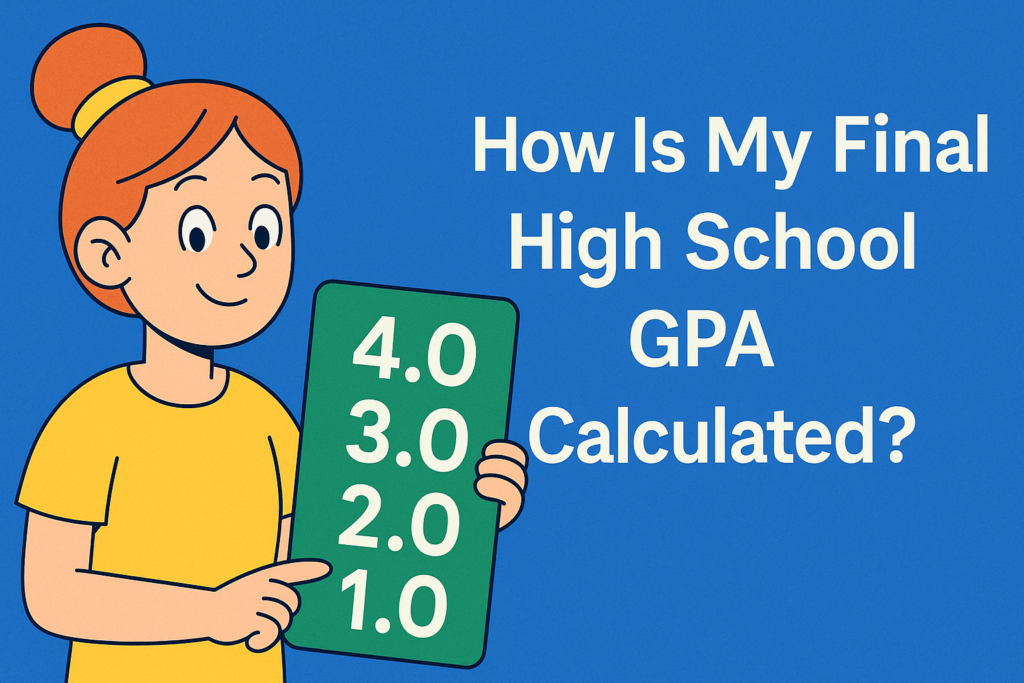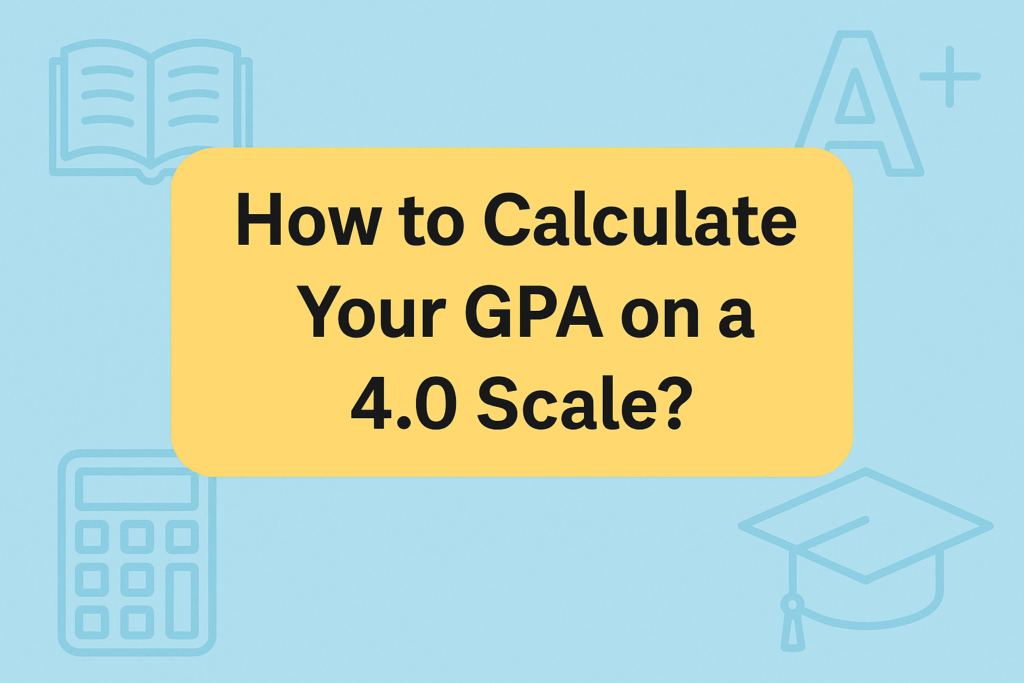High School GPA Calculator to Simplify Grade Tracking
Figuring out your high school GPA shouldn’t be stressful, but let’s be honest—it sometimes is. This high school GPA calculator helps you get a quick, clear picture of where your grades stand. Enter your courses, choose the type of GPA (weighted or not), and see the result instantly.
Calculate your High School GPA easily
Your GPA
GPA History
✅ What is a High School GPA Calculator?
A high school GPA calculator helps you understand your academic standing without doing the math yourself. It takes your course grades and credit hours and turns them into a clear, reliable GPA—something you can use to plan for college, scholarships, or even your next report card. You don’t need to guess whether a B in a more challenging class matters more than an A in an elective. The calculator shows you how each subject contributes to your overall performance. You can choose between weighted and unweighted options depending on how your school scores in honors or AP classes.
If you’re trying to improve your GPA or want a clearer picture of where you stand, this tool makes the process simple. There’s no need to be perfect with every number. Just enter what you know, adjust as needed, and check your results.
🎓 Who Can Use High School GPA Calculator?
The high school GPA calculator isn’t just for high schoolers. It works just as well for middle school students who want an early look at their academic progress. Whether tracking a semester GPA after midterms or checking a final grade at the end of the year, this tool helps make sense of where you stand. Students use it to stay motivated. Parents often check it to stay informed. And for counselors or teachers, it’s a reliable way to guide planning—especially when every decimal can make a difference.
You don’t need to be great at math. You’ll get a clearer picture of your performance with your grades, course types, and a few quiet minutes.
🧮 How to Use High School GPA Calculator (Step-by-Step Guide)
You don’t need to be a math person to figure out your GPA. With this high school GPA calculator, it’s more about knowing your grades and being honest about the work you’ve put in. The steps? It’s pretty straightforward once you get going.
✅ Step 1: Pick your GPA scale
Most schools use the 4.0 scale, but yours might use 5.0, 7.0, or even 10.0—especially if you’re in a different country or program. Use the dropdown menu at the top to choose the one that applies to your school.
✅ Step 2: Add a semester
Click “Add Semester”. You can enter just one or add multiple if you’re calculating a cumulative GPA. Some students only track their current semester, while others look at the full year or more.
✅ Step 3: Fill in your course details
Add the course name, your letter grade, course type (Regular, Honors, AP, or College), and the credit value. If your school treats all classes equally, you can just enter 1 for each credit.
✅ Step 4: Click to calculate
Once everything’s filled in, hit “Calculate GPA.” You’ll see the result instantly, along with a progress bar and a semester-by-semester GPA history if you’re tracking more than one.
✅ The Formula Behind GPA Calculation
GPA = (Total Grade Points) ÷ (Total Credits)
We take the grade points for each course, multiply them by the course’s credit, add everything up, and divide by the total number of credits.
The calculator automatically adjusts for tougher classes. Honors courses add 0.5 points, and AP or IB courses add 1.0. No need to do it manually—it’s already built in.
If you’re trying to keep your grades steady or preparing for college applications, this tool helps you see the full picture.
🎓 High School GPA Calculator FAQs
1. How do I calculate my high school GPA?
2. What is a good GPA in high school for college?
3. Is a weighted GPA better than an unweighted GPA?
4. How can I raise my GPA in high school fast?
5. What GPA do you need to get into college?
6. What's the difference between semester GPA and cumulative GPA?
7. Do honors and AP classes boost your GPA?
8. What is the highest GPA you can get in high school?
9. How does GPA affect college admissions?
10. Can I calculate GPA with only letter grades?
11. How many credits are used to calculate GPA in high school?
12. Is GPA the same in all high schools?
13. How do I calculate GPA with different grade scales (4.0, 5.0, 10.0)?
14. Do colleges look at weighted or unweighted GPAs?
15. What GPA do Ivy League schools look for?
16. Can I use a middle school or 9th-grade GPA calculator?
17. What's considered a low GPA in high school?
18. How often should I check my GPA in high school?
19. Do failed classes count in GPA calculation?
20. Can extracurriculars help if my GPA is low?
GPA Calculator Suite
Access our comprehensive suite of GPA calculators
GPA Calculator
Calculate your GPA easily
College GPA Calculator
Calculate your college GPA easily
High School GPA Calculator
Calculate your high school GPA easily
Semester GPA Calculator
Calculate your Semester GPA easily
Cumulative GPA Calculator
Calculate your Cumulative GPA easily
Final Grade Calculator
Calculate your Final Grade easily
Weighted Grade Calculator
Calculate your Weighted Grade easily
EZ Grader – Easy Grade Calculator
Calculate your Easy Grade Calculator easily
CGPA to GPA Converter
Convert CGPA to GPA easily
CGPA to Percentage Converter
Convert CGPA to Percentage easily
CGPA to Marks Converter
Convert CGPA to Marks easily
Grade to GPA Converter
Convert Grade to GPA easily
Marks to Percentage Converter
Convert Marks to Percentage easily
Percentage To CGPA Converter
Convert Percentage To CGPA easily
Percentage to GPA Converter
Convert Percentage to GPA easily
Percentage To SGPA Converter
Convert Percentage To SGPA easily
SGPA to CGPA Converter
Convert SGPA to CGPA easily
SGPA to Percentage Converter
Convert SGPA to Percentage easily
GPA Calculator: The Ultimate Guides to Calculate & Improve Your Grades
How Is My Final High School GPA Calculated?
How Is My Final High School GPA Calculated? What Is a Final GPA in High School? Your final high school GPA is a cumulative number that reflects how you performed across all your classes from freshman through senior year. It’s more than just a semester average. It’s the total snapshot. Colleges use this number to […]
How to Calculate Your GPA on a 4.0 Scale?
How to Calculate Your GPA on a 4.0 Scale? What is GPA and Why Does It Matter? GPA stands for Grade Point Average. It sums up your academic performance into one number. If you’re aiming for college, scholarships, or even some jobs, this number quietly sits on the top of your transcript, silently speaking for […]
How do I calculate my overall High School GPA?
How do I calculate my overall High School GPA? Understanding the Basics of High School GPA What Is GPA and Why Does It Matter? Grade Point Average (GPA) is the most common way schools summarize your academic performance. It takes all your grades and converts them into a single number. That number is used by […]




